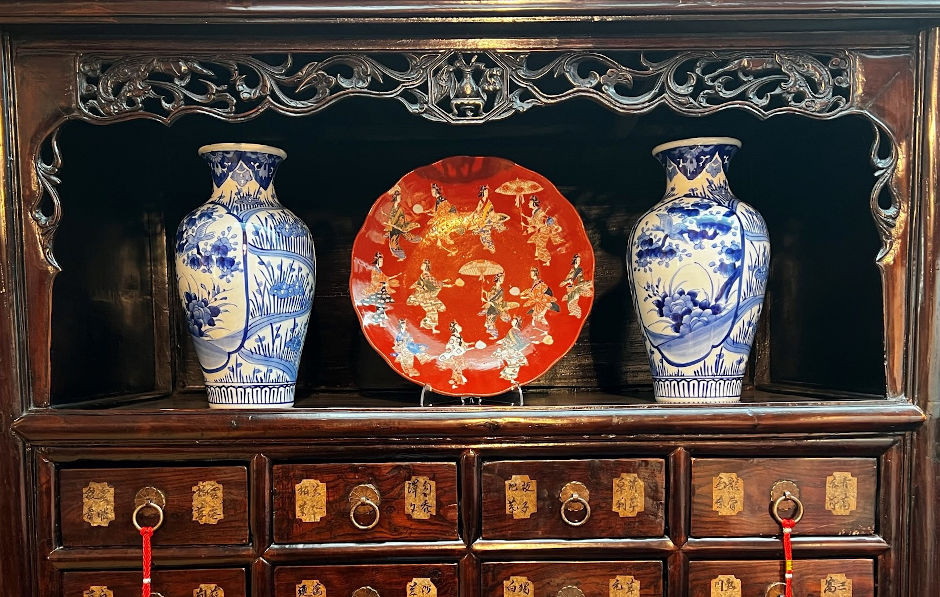
Chinese antiques have enjoyed an enduring popularity that is as strong today as ever. But, what types of Chinese antiques are there and why are they so popular?
What are Chinese antiques?
Chinese antiques are revered around the world for their beauty and for the craftsmanship that produced them, and they encompass many categories including porcelain, rugs and textiles, furniture, paintings and sculpture.
Historically Chinese artefacts and antiques began to spread around the globe as purchasers travelled around the world. Many early buyers of Chinese antiques include early missionaries and explorers and pieces were passed down through generations, along with their histories.
Most of us are familiar with expressions like ‘Ming Dynasty’ but what does that mean and when was the Ming Dynasty? A dynasty is simply the word given to a period of time defined by rulers from the same family and in Chinese history, eras bear the name of the dominant family or clan. Some dynasties endured for centuries and here are the most relevant to the collectable market, with their dates and the area of antiques they are most associated with.
Qin Dynasty 221BC-206BC
The first of the great Chinese dynasties oversaw the construction of the Great Wall of China, and it was the funeral of the Emperor Qin Shi Huang that prompted the construction of the most famous Chinese antiques – the Terracotta Army.
Han Dynasty 206 BC-220AD
The longest lasting Chinese empire, the Han Dynasty is known for its achievements in government structuring and its use, for the first time, of porcelain in the manufacture of ceramic wares.
Tang Dynasty 618-907
Considered a period of artistic development, the legacy of the Tang Dynasty is to be found in burial artefacts which include pottery figures of animals (horses, camels) and people (musicians, dancers). It is during this period also that we see an emergence of bronze pieces inlaid with precious metals and enamel.
Ming Dynasty 1368-1644
Perhaps the most widely known dynasty, the Ming Dynasty ushered in an age of enlightenment, coinciding with the European Renaissance and Gothic movements, and was most prolific in the production of today’s antiques. At a time when famous explorers like Christopher Columbus and Vasca de Gama were discovering the world, the Chinese were producing their now famous blue and white pottery and creating the most magnificent scrolls adorned with exquisite examples of calligraphy.
Qing Dynasty 1644-1911
During the period which witnessed the biggest rise in trade with Great Britain and the west, the Qing Dynasty saw the biggest demand for everything Chinese, particularly ceramics which were exported on a huge scale, and brought about the famous East India Company. Other Chinese products such as tea, silks and spices were also in great demand and many of these items have remained in the west.
1911
In 1911, the last of the Imperial Dynasties was brought to an end with the Chinese revolution which effectively brought the imperial system to an end, replacing it with the Republic of China.
Types of Chinese antiques
Pots & containers – encompassing vases, teapots, plates, bowls and much more, Chinese vessels are found in porcelain and clay, as well as glass, jade and bronze.
Paintings and artwork – sought after by Chinese antique dealers, Chinese artwork can be split by the technique used to produce it. Gongbi artwork tells a story and was usually produced by imperial court artisans using detailed brushstrokes. Watercolour pieces were produced by scholars and are referred to as ‘water and ink’.
Chinese sculpture – most frequently depicting animals (real and mythical), people and religious icons, many sculptures are made from wood, clay, bronze and, by far the most popular material, jade. Jade can be found in many colours but the most highly prized is white jade which ranges from white to light yellow.
Chinese antique furniture – the choice of wood a piece is made from vastly affects value but all Chinese antique furniture is generally extremely well made without the use of glue or nails, relying instead on the skills of the maker and the quality of his hand crafted joints. Don’t fear restored pieces – many will have undergone restoration over time as they will have been used on a daily basis.
At Hemswell Antique Centres, we house collections from over 300 dealers and we always have a selection of Chinese antiques available to view online, which includes Chinese artwork and Chinese textiles.
We welcome Chinese buyers and for those unable to visit us in person, we are able to offer Live Virtual Shopping Tours. For more information, please call us today on 01427 668389.